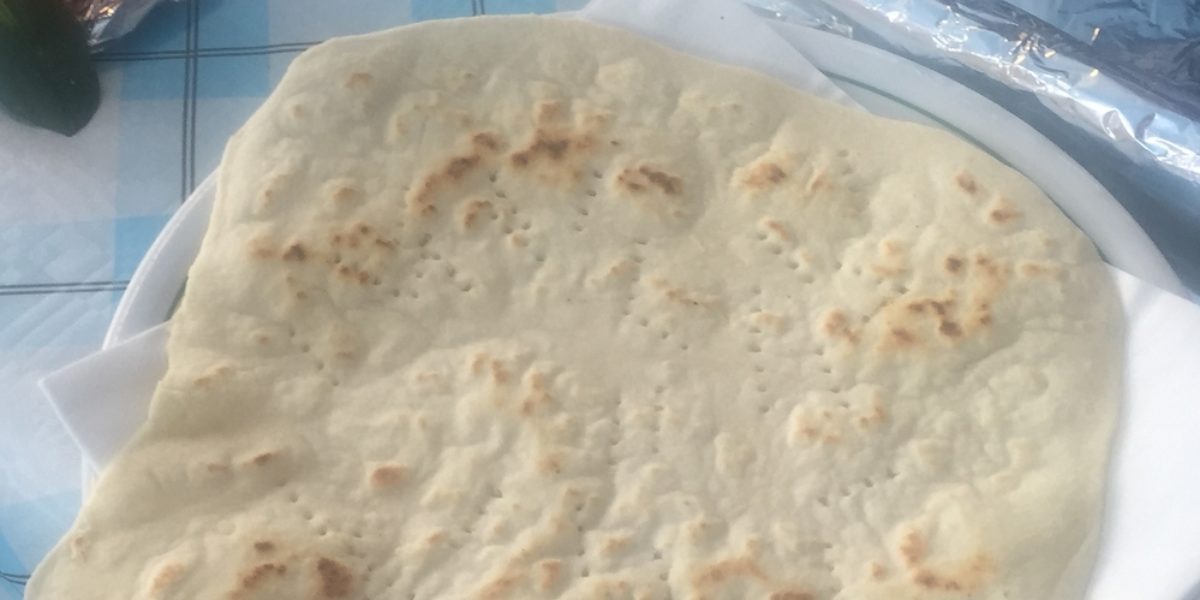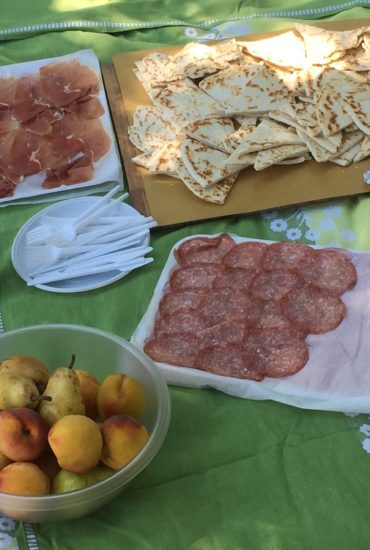Unfortunately, I love bread. I would like to pretend that I don’t and actually, I am pretty picky about my bread. I like the good stuff. Like the bread that Todd at Farm to Hearth makes. Or my own homemade focaccia. And of course, any single thing from Roscioli bakery in Rome. I don’t like sandwiches made on “sandwich” bread (anything that comes in a plastic bag) but I would rather have a good piece of warm, fresh bread than a piece of cake.
Thankfully, my job takes me to a place where the bread is delicious. And even when the bread is not so delicious (like in Tuscany where they don’t put salt in it) they make it into beautiful dishes such as bruschetta, crostini and pappa al pomodoro. Even better, there is a seemingly endless variety of breads from around Italy so I am constantly discovering new ways to consume that perfect combination of flour, water, yeast and salt.
In Italy, bread is not meant to be a first course like it is in the States. A bread basket does not arrive before the meal to be consumed before the good stuff arrives at the table. In Italy, bread serves two purposes. You use it to sop up all of the gorgeous sauce left at the bottom of the bowl once you have eaten your pasta. This is called “fare la scarpetta” which literally means “to make a little shoe”. The “shoe” is the piece of bread which you then drag along the plate to get every last bit of sauce that remains.
The other use of bread in Italy is as a vessel for meats, cheeses and greens – think pizza, panini etc. As with everything in Italy, simple is better. When it comes to toppings and fillings in Italian pizzas and sandwiches, keep in mind that less is more. A true Italian panino will have one or two slices of prosciutto and a single slice of cheese. That’s it. And that is all you need when the ingredients are bursting with flavor.
Last month in Romagna, we made piadina, the typical flat bread of Emilia Romagna. This simple, four ingredient bread looks like a pita but does not open. Instead, you add greens and cheese or other fillings to the flat bread in the cooking process (in this case, it is no longer called a piadina, but rather a cassone) or you simply layer prosciutto, salame or cheese on top and eat it as we did when we had a picnic one afternoon. Of course, you can certainly use the piadina to fare la scarpetta.
Piadina is made from a simple mixture of “00” flour (available at your Italian market), lard (or olive oil), baking powder, salt and water. It is then cooked on a pan called a testo. These were originally made from terra cotta but now come in a more durable metal or cast iron variety that are not at risk of cracking when placed on the flame. Here are the details of the recipe:
Piadina

Mix together flour, salt and baking powder.
On a wooden board make a well in the center of the flour mixture, add the lard and slowly pour 1/2 of the water over the lard, using your hand to mix it around until the lard is completely dissolved.
Bring the flour into the center to incorporate all ingredients, adding water as needed.
Sprinkle some flour on the board and knead the dough until it is soft and elastic (about 5 minutes).
Make small balls and roll the dough out very thinly.
Cook on a hot testo (or griddle) for a minute or so on each side (do not add oil to the cooking surface).
Ingredients
Directions
Mix together flour, salt and baking powder.
On a wooden board make a well in the center of the flour mixture, add the lard and slowly pour 1/2 of the water over the lard, using your hand to mix it around until the lard is completely dissolved.
Bring the flour into the center to incorporate all ingredients, adding water as needed.
Sprinkle some flour on the board and knead the dough until it is soft and elastic (about 5 minutes).
Make small balls and roll the dough out very thinly.
Cook on a hot testo (or griddle) for a minute or so on each side (do not add oil to the cooking surface).
Notes
Believe me when I tell you that piadina is a serious thing around this region. I think that it was served at every meal. We were invited to the Festival of the Piadina which went on for three nights in the town of Bellaria. There were stands serving piadine and cassoni of all varieties – meats, cheeses, fish (as we were right by the sea) and yes, even Nutella! It was a lively and fun way to be a part of the local traditions and had me, once again, #lovingromagna.
If you try making piadina at home or if you have ever had them, I would love to hear about it. Leave a comment below!
Tastefully yours,
Ashley

